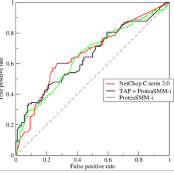Although melanoma occurs more rarely than several other skin cancers, patients' long term survival rate is extremely low if the diagnosis is missed. Diagnosis is complicated by a high discordance rate among pathologists when distinguishing between melanoma and benign melanocytic lesions. A tool that allows pathology labs to sort and prioritize melanoma cases in their workflow could improve turnaround time by prioritizing challenging cases and routing them directly to the appropriate subspecialist. We present a pathology deep learning system (PDLS) that performs hierarchical classification of digitized whole slide image (WSI) specimens into six classes defined by their morphological characteristics, including classification of "Melanocytic Suspect" specimens likely representing melanoma or severe dysplastic nevi. We trained the system on 7,685 images from a single lab (the reference lab), including the the largest set of triple-concordant melanocytic specimens compiled to date, and tested the system on 5,099 images from two distinct validation labs. We achieved Area Underneath the ROC Curve (AUC) values of 0.93 classifying Melanocytic Suspect specimens on the reference lab, 0.95 on the first validation lab, and 0.82 on the second validation lab. We demonstrate that the PDLS is capable of automatically sorting and triaging skin specimens with high sensitivity to Melanocytic Suspect cases and that a pathologist would only need between 30% and 60% of the caseload to address all melanoma specimens.
翻译:虽然乳腺瘤比其他几例皮肤癌发生得少得多,但患者长期存活率极低,如果诊断失败,则其诊断失败,则患者长期存活率极低。诊断由于病理学家在区分乳腺瘤和良性乳腺损伤时的高度差异率而变得复杂。一个工具允许病理实验室在工作流程中分拣和优先处理乳腺瘤病例,这样可以改善周转时间,办法是优先处理具有挑战性的案件,并将它们直接送到适当的亚专家处。我们推出一个病理学深层次学习系统(PDLS),对数字化整张幻灯片图像标本进行等级分类,按其形态特征界定分为六类,包括可能代表乳腺瘤或严重性肿瘤神经损伤的“地中海疑犯”标本的高度差异率。我们对该系统进行了培训,从一个单一实验室(参考实验室)的7 685个图像中,包括迄今为止所汇编的最大一组三感应和谐的内衣的内线细胞细胞标本样本,从两个不同的鉴定实验室的5 099个图像中测试了系统。我们实现了ROC Curverial(AC Curverial Revidual)第一位参考值,我们在0.9的实验室和0.9的实验室的实验室样本样本样本样本样本样本样本样本样本样本样本样本样本样本样本样本样本样本样本样本样本样本样本样本样本样本中展示了。



